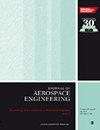约束和垂直壁面相互作用对四轴机械臂工作空间的影响
IF 1.1
4区 工程技术
Q3 ENGINEERING, AEROSPACE
Proceedings of the Institution of Mechanical Engineers Part G-Journal of Aerospace Engineering
Pub Date : 2023-09-07
DOI:10.1177/09544100231193133
引用次数: 1
摘要
结合无人机进行近目标操作的机械臂工作空间分析具有重要意义。分析了安装在四轴飞行器底部具有扩展工作空间的三自由度机械臂的工作空间,并给出了运动规划算法。四轴飞行器操纵系统包括一个机械臂,该机械臂连接在四轴飞行器的底部重心上。由于其末端执行器可以到达无人机机身上下的三维位置,因此该机械手具有扩展的工作空间。机械臂的工作空间由系统运动学决定。无人机的下冲、机械臂的奇异性、伺服电机失速扭矩和机械结构等因素限制了机械臂在实时任务中的工作空间。详细描述了这些因素及其对机械臂可达工作空间的影响。基于这些限制,运动规划算法验证了特定手臂配置的可行性,从而验证了任务的可行性。提出了近壁效应的概念和限制其对空中机器人影响的策略,以理解在涉及复合墙上目标的任务中墙壁对系统的影响。利用MATLAB和ROS/Gazebo仿真对所提出的研究成果进行了评估。本文章由计算机程序翻译,如有差异,请以英文原文为准。
Effect of constraints and vertical wall interaction on workspace of a quadcopter manipulator system
The workspace analysis of a robotic arm coupled to an unmanned aerial vehicle executing close-to-target operations is significant. The workspace of a 3 degree-of-freedom manipulator mounted to the bottom of a quadcopter and having an extended workspace is analyzed in this research, along with a motion planning algorithm. The quadcopter manipulator system comprises a robotic arm attached to the quadcopter’s center of gravity at its bottom. The manipulator has an extended workspace as its end-effector can reach three-dimensional locations above and below the drone’s airframe. The arm’s workspace is determined by system kinematics. Certain factors like downwash from the drone, the robotic arm’s singularity, servo motor stall torques, and mechanical structure limit the arm’s workspace during real-time tasks. A detailed description of these factors and their impact on the arm’s reachable workspace is also provided. Based on these limitations, the motion planning algorithm verifies the viability of a specific arm configuration and, therefore, the feasibility of the task. A concept called the near-wall effect and strategies to limit its influence on aerial robots are presented to comprehend the effect of a wall on the system in tasks involving targets on a compound wall. The proposed research outcomes are evaluated using MATLAB and ROS/Gazebo simulations.
求助全文
通过发布文献求助,成功后即可免费获取论文全文。
去求助
来源期刊

CiteScore
2.40
自引率
18.20%
发文量
212
审稿时长
5.7 months
期刊介绍:
The Journal of Aerospace Engineering is dedicated to the publication of high quality research in all branches of applied sciences and technology dealing with aircraft and spacecraft, and their support systems. "Our authorship is truly international and all efforts are made to ensure that each paper is presented in the best possible way and reaches a wide audience.
"The Editorial Board is composed of recognized experts representing the technical communities of fifteen countries. The Board Members work in close cooperation with the editors, reviewers, and authors to achieve a consistent standard of well written and presented papers."Professor Rodrigo Martinez-Val, Universidad Politécnica de Madrid, Spain
This journal is a member of the Committee on Publication Ethics (COPE).
 求助内容:
求助内容: 应助结果提醒方式:
应助结果提醒方式:


